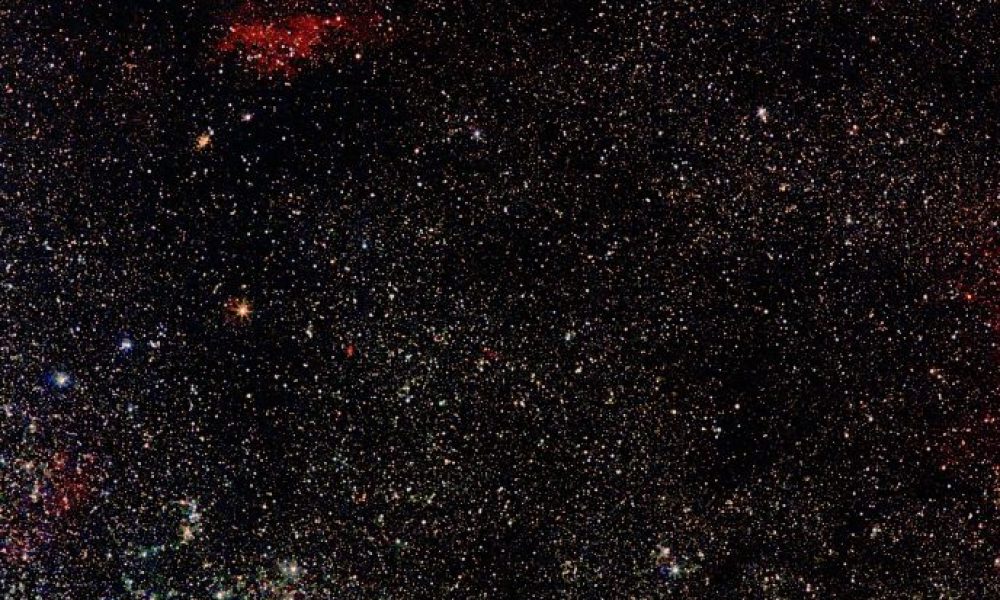If you live in a rural or suburban area and look at the sky at night to see the Milky Way, you probably do that in the summer time. Nights are mostly warm then, so it can be pleasant to be out. But also that is the best time to see the Milky Way because in the evening the very brightest part is above the horizon, low in the south, while a fairly bright part stretches high overhead. This is the brightest part because we, as residents inside our galaxy, are looking toward the center of the galaxy with it’s bright concentration of stars, star clusters and gaseous nebulae.
As we move into autumn and then winter, the Milky Way is much less noticeable because we are then looking away from the center, into outer space, through only the more sparsely populated outer parts of our galaxy. Nevertheless, if you are lucky enough to have dark skies available (like at Lookout Observatory), you can still see interesting parts of our galaxy. If you faced due south at 10 PM tonight, and looked overhead and then arched your back even more so you were looking about 20 degrees further north (and if you could keep from toppling over backwards), you would be looking at the part of the sky shown in the first image.
The Milky Way would run diagonally overhead, but you couldn’t see it as brightly as this because this is an 18-minute time exposure, accumulating over time more light than your eye can record. The brightest star near the top, roughly centered between left and right sides, is Polaris, the North Star. The brightest part of the Milky Way has long ago set in the west (out of the picture to the right). But the right-hand part of the Milky Way in the picture, through the constellation Cygnus, is still bright. It contains the brightest pinkish triangular patch, the North American Nebula. If you look closely at it, you will see that it looks like – you guessed it – North America! Further east and north, in a spot close to directly overhead, I have marked a region with a yellow rectangle.
This is the area of the second image. It is 14 times the scale of the first image. Because it was exposed for much longer, a total of 2 and ½ hours in visible and deep red light, it goes much deeper and shows many of the red nebulae scattered through this part of our galaxy. In the upper left (north east) corner is the multi-part Cave Nebula, a region of star formation about 2400 light years away. The energy from the stars causes the hydrogen gas to ionize and radiate red light at a wavelength of 656 nanometers (called hydrogen alpha, or Ha wavelength). Near the center of the bottom 1/3 of the image is another bright red nebula known as the Wizard Nebula. The yellow box around it shows the area of the third image.
This image is at a scale 10 times the previous one. A full moon would just about fill this image. Because this image was exposed for a total of a little over an hour, it doesn’t show the nebula as extensively as the previous one, but because the scale is so much larger, the detail is much richer. This is hydrogen gas and dust surrounding a cluster of young hot stars about 7500 light years away, where star formation is still happening. The red gas, blown into wispy shapes by radiation pressure from the stars, together with obscuring dust reminds me of hot coals at the end of a campfire. The bluish light is starlight from the blue cluster stars reflected off of the gas.
I hope the beauty of this 100 light-year across nebula could transport you, even if just briefly, to a place of peace and wonder, far from the concerns of our present world.
Keep looking up,
Carter, (sometime) Resident Astronomer,
Lookout Observatory


